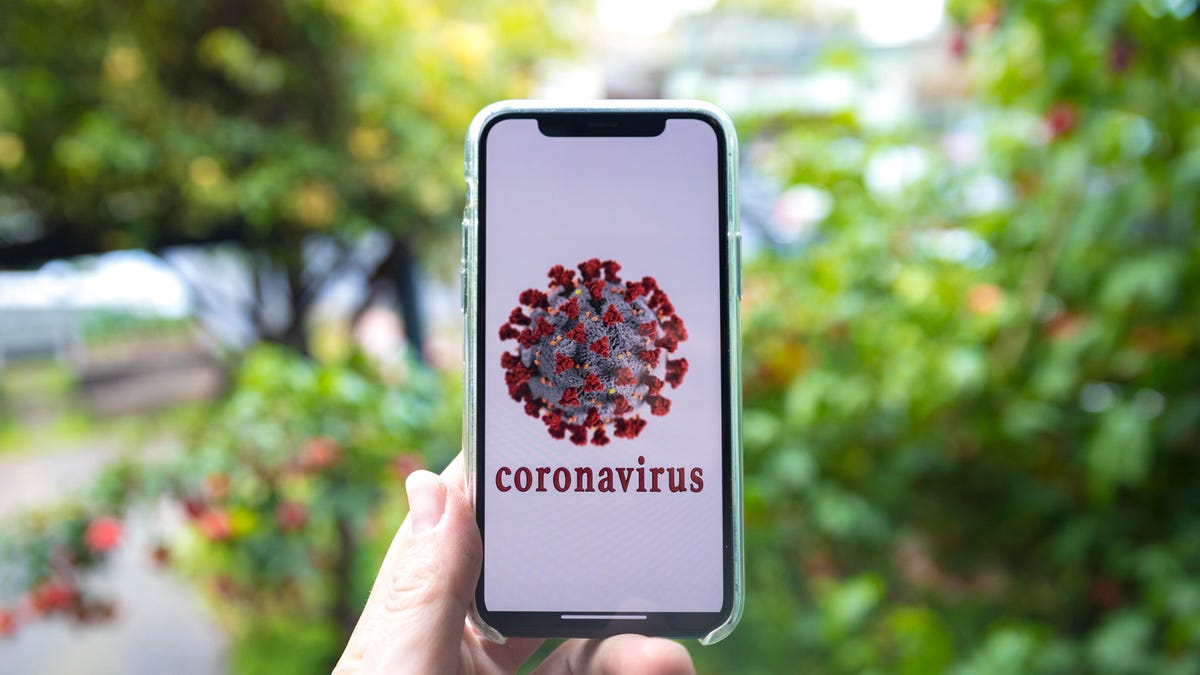Apple, Google promise better coronavirus tracking with 'exposure notifications express'
Apple and Google want to encourage more adoption, allowing people to join the system even if a local health agency doesn't have an app.

Apple and Google want to make it easier for health agencies to join its coronavirus exposure notification system, creating a new option that will allow them to help people track and alert one another about coronavirus infections without having to build an app.
The new option, called exposure notifications express, will allow individuals to join Apple's and Google's coronavirus notifications without needing to download an app from their local health department. This, the two companies said, will help spread adoption without putting pressure on health officials, some of whom have told the tech companies they don't have the resources to build an app.
Apple made the updates available for its iPhones and iPads with the iOS 13.7 release Tuesday, and Google said it'll make the new system available for devices running Android 6.0 or higher with an update later this month.
"We are making it easier and faster for them to use the Exposure Notifications System without the need for them to build and maintain an app," the two companies said in a joint statement. The companies said they'll continue to support public health authorities that have built their own apps, as in Canada, but are building this new system to help authorities that aren't able to build them. "Exposure Notifications Express provides another option for public health authorities to supplement their existing contact tracing operations with technology without compromising on the project's core tenets of user privacy and security."
The move marks a shift for Apple and Google, which began working on the joint coronavirus effort in the spring, around when the coronavirus' spread became more clear. As of the start of September, more than 25 million people have been infected around the world and more than 851,000 people have died, according to data collected by Johns Hopkins University. And while the spread has continued, Apple and Google's project has struggled to gain wide adoption.
Apple and Google, in earlier iterations of their coronavirus system, relied on local health departments to build apps that plugged into the companies' communication and security systems. The tech giants said they'd help authorities build apps, but largely put the onus on them to make the system work. As a result, only about 20 countries and regions have launched so far, including just six of the 50 states in the US. Further, only about half of US states and territories are exploring Apple and Google's system.
By switching to the new system, also called EN Express by the companies, Apple and Google expect the dramatically simplified approach will draw in more health departments that may have decided against working with the companies because of the resources they'd need to commit toward building and maintaining an app.
To get the exposure notifications, people who use iPhones will be prompted that the feature is available and be able to turn it on in their settings.
For Android phones, Google will auto-generate an app for users to download, so public health authorities won't have to build or maintain the apps themselves. While this requires an extra step of Android users, a Google spokesman said the company believes it's the best way to get the tools on as many different types of Android hardware as possible.
A look at what Apple and Google's new exposure notification system will look like.
New approach
Apple and Google's new approach allows health authorities to submit a "configuration file," which will dictate how potential exposure notifications will be triggered, what steps they'll advise people to follow afterward, and information on any other contact tracing efforts that may exist in their area. This, Apple and Google say, is much easier than building an app, while still ensuring people's privacy and security.
"Public health agencies are carrying an extraordinary load in managing the novel coronavirus response," said Scott J. Becker, head of the Association of Public Health Laboratories, in a statement provided by the companies. "The easier we make it for state and territorial public health agencies to develop and deploy, the sooner we can expand COVID-19 exposure notification in our communities and help end the pandemic."



